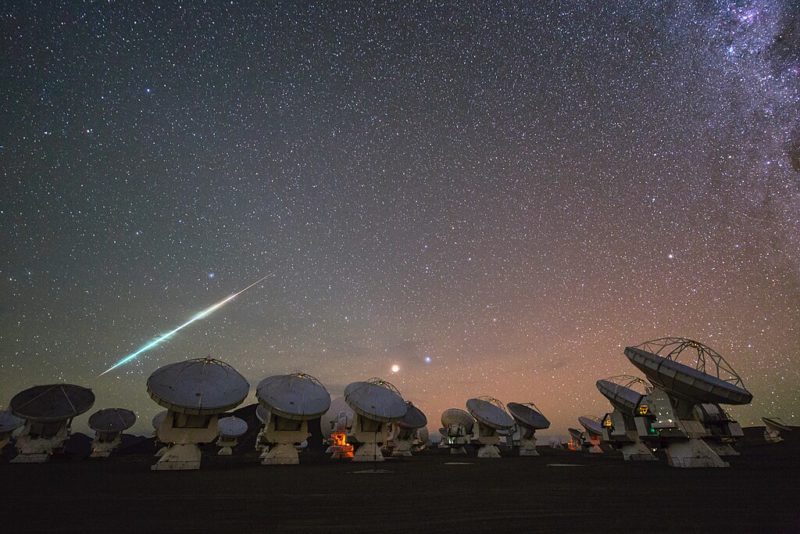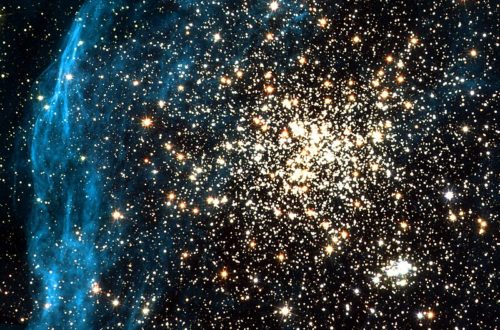How Is a Fireball (Or Bolide) Different From a Meteor?

Meteors are small fragments of rock and debris that enter Earth’s atmosphere and burn up upon entry, creating a streak of light in the sky. Fireballs are similar to meteors but are larger in size and brighter than a typical meteor. Bolides and superbolides are larger still.
This article embarks on a journey to unravel the nuanced differences between a meteor, a fireball, and a bolide, delving into their defining features and behaviors. Furthermore, a rare and extraordinary phenomenon, the superbolide, demands its place in our scrutiny, captivating scientists and stargazers alike with its remarkable traits.
What Is a Meteor?
Meteors, those ethereal streaks that grace our night skies, embody the enchanting dance between cosmic debris and our planet’s atmosphere. These celestial phenomena are born from meteoroids, often no larger than a grain of sand, hurtling through space. As they encounter Earth’s atmosphere, friction ignites these small particles, transforming them into luminous trails that streak across the heavens.
Their appearances are fleeting yet captivating, painting momentary brushstrokes of light against the dark expanse of the night sky. Observers commonly describe them as “shooting stars,” a poetic nod to their transient brilliance.
Moreover, meteors often occur in showers, such as the annual Perseids or Leonids, created when Earth passes through the debris trails left by comets. These celestial shows captivate audiences worldwide, drawing attention to the beauty and spectacle of these cosmic occurrences.
What Is a Fireball?
Fireballs stand out in the realm of celestial events due to their remarkable brightness and striking appearances. These phenomena are essentially brighter and more visible versions of regular meteors. Their brightness often results from larger meteoroids or unique materials burning up in the atmosphere.
The distinction between a regular meteor and a fireball lies in their brightness, with the threshold commonly considered to be the luminosity of Venus in the night sky, or an apparent magnitude of -4.
Their intense glow, sometimes lasting longer than typical meteors, captures attention. Fireballs can display a range of colors and may break into multiple fragments, creating a spectacular show.
What Is a Bolide?
Bolides emerge as remarkable celestial occurrences that surpass the typical characteristics of regular meteors and even fireballs. These events captivate observers with their exceptional brightness, rivaling or surpassing the luminosity of the full moon at an apparent magnitude of -12.6 or more.
These extraordinary phenomena are characterized by their intense brightness, casting an illuminating glow across the sky that outshines the stars. What distinguishes bolides further is their potential to create sonic booms or loud noises upon entry into the atmosphere, adding a dynamic element to their display. This is often because bolides explode in the atmosphere.
One of the defining features of bolides is their tendency to produce dazzling and prolonged light shows, lasting several seconds or even minutes. This prolonged visibility, coupled with their exceptional brightness, captures the attention of both seasoned astronomers and casual sky gazers.
What Is a Superbolide?
Superbolides stand as extraordinary cosmic phenomena that transcend the already impressive traits of bolides. These rare events manifest as exceptionally bright and prolonged displays that surpass the luminosity of typical bolides, rivaling or even exceeding the brightness of the full moon a hundredfold, or an apparent magnitude of at least -17.
What sets superbolides apart is not only their extraordinary brightness but also their immense energy release upon entry into the atmosphere, resulting in breathtaking and unprecedented light shows that command attention across vast regions.
These events are known for their potential to generate shockwaves and sonic booms that reverberate through the atmosphere, further underscoring their immense energy and impact. The prolonged duration and incredible brightness of superbolides set them apart as exceptional and rare celestial occurrences. The Chelyabinsk meteor that fell in Russia in 2013 is a recent example of a superbolide.
The study of superbolides presents an intriguing avenue for scientists seeking to unravel the mysteries of these high-energy cosmic events. The analysis of their trajectories, composition, and energetic output provides invaluable insights into the dynamics of larger celestial bodies interacting with our atmosphere, contributing to our understanding of the potential risks posed by such objects.
By delving into the exceptional characteristics of superbolides, scientists aim not only to comprehend these extraordinary events but also to enhance our preparedness for potential celestial threats and further our understanding of the broader cosmic landscape that surrounds our planet.
Conclusion
In summary, the difference between a meteor, a fireball, a bolide, and a superbolide hinges primarily on their brightness. A fireball is a meteor brighter than the planet Venus, a bolide is brighter than the full moon, and a superbolide is brighter than a hundred full moons.
From the fleeting elegance of meteors to the intensified brilliance of fireballs and the exceptional displays of bolides and superbolides, each offers a glimpse into the dynamic interplay between cosmic elements and our atmosphere.
These celestial events, beyond their visual allure, serve as critical windows for scientific exploration. They provide invaluable insights into cosmic debris, atmospheric dynamics, and the potential hazards posed by larger celestial bodies.
As we conclude this exploration, these celestial phenomena not only captivate our gaze but also beckon further investigation, highlighting the ongoing mysteries within our cosmic neighborhood and emphasizing the importance of continued observation and understanding of the wonders that adorn our night sky.
FAQ
How Rare Is It to See a Fireball?
It is relatively rare to see a fireball in the sky, although they do occur more frequently than people may think. Fireballs are essentially very bright meteors that are caused by debris from space entering the Earth’s atmosphere and burning up due to friction. While smaller meteors burn up completely before they hit the ground, fireballs are larger and can sometimes leave behind fragments that can be found on the surface.
According to NASA, there are several thousand fireballs that occur in the Earth’s atmosphere every day, but most of them happen over oceans or uninhabited areas where they go unnoticed. Only a small percentage of fireballs are actually seen by people on the ground.
The best chance of seeing a fireball is during meteor showers, when there are higher rates of meteors entering the atmosphere. Some factors that can increase the likelihood of seeing a fireball include being in a dark area with little light pollution, having clear weather conditions with no clouds blocking your view, and being outside during peak meteor activity times.
Overall, while it is not common to see a fireball in the sky, it is not necessarily an extremely rare occurrence either. With some planning and luck, you may be able to catch a glimpse of one during your lifetime.
Would you like to receive similar articles by email?





